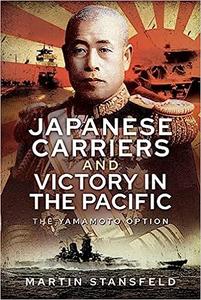
Free Download Martin Stansfeld, "Japanese Carriers and Victory in the Pacific: The Yamamoto Option"
English | ISBN: 1399010115 | 2022 | 272 pages | PDF | 26 MB
Japanese Carriers and Victory in the Pacific focuses on the pre-war debate between building a new generation of super-battleships or adopting aircraft carriers as the capital ships of the future. An Asian power in particular sees carriers as a way of challenging the USA and the colonial empires initially losing the contest yet coming out all right in the Cold War aftermath. Martin Stansfeld examines the much-overlooked genesis of Japan's so-called shadow fleet that was a secret attempt to bring about parity with the U.S. in carriers albeit only with slower speed conversions of liners and auxiliaries but along with the super battleships cluttered launch facilities when these could have been devoted to keel-up fast fleet carrier production. This first analytical look at what major launch facilities were available in Japan shows that the Imperial Japanese Navy could have doubled its fast carrier fleet thereby able to give sufficient air cover for the invasion of Hawaii rather than just the raid on Pearl Harbor, but only providing nobody noticed they were building all these carriers. This is shown to have been entirely possible given the IJN's extraordinary success at covering up their super battleship and shadow fleet production. This secret fast carrier fleet program is given the name "phantom fleet" by Stansfeld who proceeds to demonstrate how the strategy of the Pacific War would have been transformed. Weaving through the chapters is an exotic cast of characters led most notably by Admiral Isoroku Yamamoto, the conceiver of Pearl Harbor and a figure of mythic status to Japanese today and famous around the world thanks to the movies. Stansfeld dwells on the ironies of war, notably how, without, the "day that will live in infamy," America might never have become the worldwide super-power it is today.
Read more
